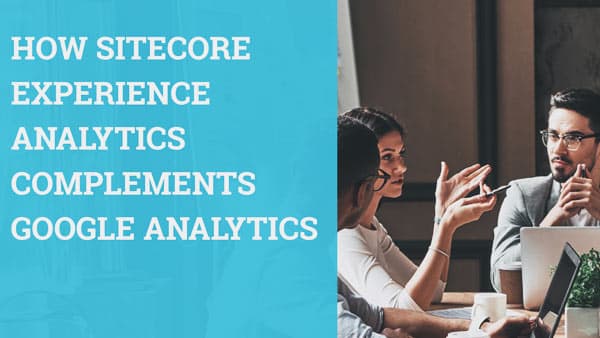

Jun 28, 2023
Change is inevitable. After 11 years of Google Universal Analytics (UA), Google is shutting UA down as of July 1 and replacing it with Google Analytics 4 (GA4), the latest version of the Google Analytics platform. GA4 is designed to provide a more comprehensive solution for tracking user interactions. It focuses on event-driven tracking rather than page views and provides a more detailed understanding of user behavior. Additionally, GA4 offers better data privacy for users.
If you have any exposure to the world of online marketing, you’ve probably at least heard some rumblings on this topic. If you’re wondering what all the fuss is about, this blog post will explore the differences between UA and GA4, highlight what you need to know about GA4, and provide some insights to help you navigate the transition smoothly.
Key Differences
Event-Driven Tracking
The key difference between GA4 and UA revolves around event tracking. In GA4, every interaction is an event. For example, events in GA4 include page views, clicks, video plays, form submissions, etc. This provides a detailed view of user engagement and actions. Meanwhile UA’s measurement model is based on sessions and page views. The move to event-driven tracking provides a more accurate view into user behavior by giving the marketer more insight through distinct user interactions.
Enhanced Cross-Device Tracking
According to Google, 6 out of 10 users shop on one device but finish the transaction on another. GA4 provides a better understanding of how users interact and their behavior with your page across different devices, allowing accurate attribution and customer journey insights. GA4 is now able to track web and app data through data streams in the same place. It has four methods, or identity spaces, to enhance data accuracy: User ID, Google Signals, Device ID and Modeling. The first three already existed in UA. “Behavior Modelling” is new and has been created to cover the data gaps left by the other three. This means that for users who have declined identifiers like cookies, Google models the user behavior based on other, similar users.
During setup, you are able to select the way that Google determines the user’s identity. You have three options:
-
Blended (User ID → Google Signals → Device ID → Behavior Modeling)
-
Observed (User ID → Google Signals → Device ID)
-
Device Based (Device ID)
The items in parentheses show the order that Google uses to identify the user. The good news is that you are able to change your selection later without impacting the data that is collected.
Machine Learning and AI Integration
GA4 incorporates advanced machine learning models, empowering businesses that use GA4 to uncover valuable insights and trends in their data. This in turn, provides actionable data to optimize marketing campaigns, improve user experience, and drive business growth.
Privacy Policy and Consent
GA4 prioritizes user privacy by implementing privacy-centric features such as data control settings, consent management, evolving privacy regulations, and building trust with customers. Data has become increasingly valuable, and this shift towards privacy-conscious analytics reflects the growing importance of data protection while enabling businesses to extract valuable insights.
Things to Watch Out For
GA4’s New Model
Above, I discussed GA4’s switch to event-based tracking. This new data model is a big change to how you think about Google Analytics. Along with GA4’s new features, reports, terminology, and slightly different user interface there’s a lot to get used to. Take some time to familiarize yourself with all of the changes.
Reporting Changes
The reporting interface has changed. Default reports you’re used to may be different or gone altogether. Take some time to review and create your preferred reports which have been replaced or renamed, and dive into some of the new custom exploration reports.
Custom reports are located in the menu labeled “Explorations”. These reports consist of two columns: Variables and Tab Settings. Variables are the data you’d like to use in your reports. Meanwhile, Tab Settings is the data that actually appears on your report. There are three preset report styles. Freeform, Funnel Exploration and Path Exploration.
GA4 Data Starts from Scratch
GA4 has a complete data reset. It starts with a clean slate. From within GA4, you won’t have access to historical data from UA. Therefore, it’s important to maintain access to your UA account for reference and comparison purposes. At this point, we don’t know how long Google will retain the UA data, so if it’s important for you to keep your historical data, you should probably export it.
No New UA Data after July 1, 2023
On July 1, Google will stop processing new data on UA. For those who don’t set up GA4, Google is automatically creating GA4 accounts for you with settings based on your UA account. We suggest you log in to your account and review the new console, features, reports, and metrics to ensure things are set up the way you want.
Google Ads
If your Google Ads Account was linked to UA, Universal Analytics data will stop flowing to Google Ads on July 1. You’ll need to import your links from UA to GA4 to start seeing Google Ads data in your GA4 reports. (Follow these steps to make sure you link them correctly.)
New Metrics
GA4 has gotten rid of the bounce rate, so don’t expect to find that metric. Instead, you’ll have to use the new metric called “Engaged Sessions per user”. (“Engaged Sessions per user” is a user viewing two or more pages, a user who triggers an event or someone who stays on a page for at least 10 seconds). This metric has been created to show how many people interact with your content.
14 Month Data Retention
In UA, there were no concerns about data periods. The retention for your data ranged from 14 months to unlimited. The default retention time for data across all Google Analytics 4 properties, including conversions, is 14 months. There are two default data retention settings: 2 months or 14 months. The 2-month retention period is automatically applied to age, gender, and interest data. Note that if you change your data retention period from 2 to 14 months, you won’t instantly see any data beyond two months; it starts generating from that day forward.
In order to retain non-aggregated data beyond 14 months, you’ll want to store your historical data in a data warehouse, like Google BigQuery.
Wrapping Up
The update from UA to GA4 represents a big change in the Google Analytics platform. GA4 introduces new features and capabilities that align with the evolving needs of the digital landscape while better protecting privacy. Businesses can make more informed decisions with a more detailed understanding of user behavior and user journeys across devices. Although the transition will require some adjustment, it sets marketers up to unlock deeper insights and deliver more personalized user experiences.
Let Oshyn Be Your Development Partner
At Oshyn, we understand that analytics is the cornerstone of managing a successful website, and we know how it works with your chosen DXP. If you’re looking for a new Sitecore, Adobe, or Optimizely development partner, contact us.
Related Insights
-

-

-

-

Oshyn
How to Select a Tech Partner
A Complete Guide for Marketers





